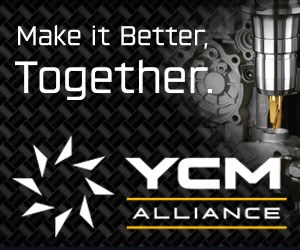CAM at a Crossroads
In the world of metalworking, the CAM part of CAD/CAM (computer-aided design/computer-aided manufacturing) generally means software for programming CNC machine tools. Currently, most of the advances and innovations in CAM software are coming from the smaller software companies devoted to this application.
Share




In the world of metalworking, the CAM part of CAD/CAM (computer-aided design/computer-aided manufacturing) generally means software for programming CNC machine tools. Currently, most of the advances and innovations in CAM software are coming from the smaller software companies devoted to this application. As forces of change in digital technology exert themselves in the next couple of years, it appears that these developers will be pulled in two directions.
On one side, the machine tool control unit—with its increasingly powerful PC-based processing capability, expansive memory, and network connectivity—is calling for more "intelligence" about the machining process. This intelligence will be necessary to interpret product data directly at the machine tool on the shop floor. On the other side, CAD systems are likewise calling for more intelligence about the machining process so that more complete information about how parts are made can be embedded in product design.
These parallel trends spring from the growing need for global manufacturing companies to be able to design anywhere and manufacture anywhere. The emergence of system-neutral standards, such as STEP and STEP-NC, for the exchange of product data, lay the groundwork for realizing this vision.
Traditionally, CNC programming was the bridge that crossed the gap between designing the part and machining the part. Now the gap between designing and machining is about to close. Before too long, product data will include not only CAD geometry but also the information that a new generation of machine control units will be able to interpret so that tool paths can be created on the spot.
Some CAM software developers will naturally gravitate toward the CAD side of this new paradigm, while others will naturally gravitate toward the control unit side. They will concentrate their development efforts on the new software products that provide machining intelligence as required by the one side or the other. Perhaps some developers will work both sides in tandem.
It's too early to tell which companies will go which way, but some of the most forward-looking companies are already contemplating the direction they should take. On thing is certain. The dynamic nature of CAM software development isn't about to relax. The new few years will be exciting ones for everyone involved in CNC machine tool programming.
Related Content
-
Orthopedic Event Discusses Manufacturing Strategies
At the seminar, representatives from multiple companies discussed strategies for making orthopedic devices accurately and efficiently.
-
How Integrated CAD/CAM Transforms Inventions Into Products
The close connection between CAD and CAM is what links creative ideas to practical production for this unique custom manufacturer.
-
Bringing Machining In-House to Keep up With Demand for Offroading Parts
To meet demand increases for its Ford offroad industry components, supplier RPG Offroad brought its machining processes in-house, saving the company nearly $50,000 per month. Here’s how its choice of integrated CAD/CAM software made it happen.

























